This article was medically reviewed by Sarah Gehrke, RN, MS. Sarah Gehrke is a Registered Nurse and Licensed Massage Therapist in Texas. Sarah has over 10 years of experience teaching and practicing phlebotomy and intravenous (IV) therapy using physical, psychological, and emotional support. She received her Massage Therapist License from the Amarillo Massage Therapy Institute in 2008 and a M.S. in Nursing from the University of Phoenix in 2013.
There are 10 references cited in this article, which can be found at the bottom of the page.
This article has been viewed 86,169 times.
If you are struggling with your weight, Victoza may be part of the solution. Although Victoza is primarily used to lower the blood sugar levels of people with Type 2 diabetes, it can be used to help you lose weight. However, for it to work effectively as a weight loss medication, you will need to combine Victoza with exercise and healthy eating. Make sure to take Victoza per your healthcare provider’s instructions. Contact your healthcare provider immediately if you experience any severe or life-threatening side effects.
Steps
Getting a Prescription
-
1Ask your healthcare provider about Victoza. Call and set up an appointment with your healthcare provider to see if Victoza is a good choice for you. Make sure to tell your healthcare provider about any allergies you have, and about any medications you are currently taking. If you do not have diabetes, Victoza may still help you lose weight if you have metabolic damage or leptin resistance.[1]
- However, since the FDA has only approved the use of Victoza for treating people with Type 2 diabetes, your insurance (in the U.S.) may not cover it if you do not have Type 2 diabetes.
-
2Get a Victoza prescription. The Victoza pen contains 18 mg of medication. Depending on your case, your healthcare provider may prescribe you a 0.6, 1.2, or 1.8 mg dosage. However, your healthcare provider may start you on an even lower dosage to see how your body reacts to the medication first.[2]Advertisement
-
3Learn how Victoza works. Victoza lowers your blood sugar by slowing the food that is leaving your stomach, preventing your liver from producing too much sugar, and by producing more insulin when your blood sugar is high. It is an injectable, non-insulin medication that should be taken once a day. It can be taken with other diabetes medications, including insulin.[3]
- Possible side effects include decreased appetite, nausea, vomiting, diarrhea, indigestion, and constipation.
Taking Victoza and Watching for Side Effects
-
1Take Victoza per your healthcare provider’s instructions. Make sure to take the correct dosage every day. Healthcare providers typically start their patients off with a 0.6 mg dosage and increase this by 0.3 mg per week or every other week.[4]
- If you are unsure about how much you should take, refer to the instructions on the label or contact your healthcare provider.
-
2Set the pen to the correct dosage. Start turning the dose button. Every time you turn the dose button, you will hear a "click." Turn the button until your dose is aligned with the white tick mark on the pen. If you accidentally select a wrong dose, just turn the dose button forward or backward to reach the correct dosage.[5]
- Avoid pressing the dose button while you turn it to your correct dosage. If you do, the medication may come out and you will have to use a new pen.
- Make sure to use the pen per your healthcare provider’s instructions.
-
3Inject the medication. Hold the pen with the needle pointing down. Place the needle side of the pen against your lower stomach, thigh, or upper arm. Press the dose button with your thumb. Hold the button down until the 0 mg dosage appears in the display -- this takes about 6 seconds. Pull the pen straight up and away from your skin once all of the medication is dispensed.[6]
- If blood appears at the injection site, hold a piece of gauze against it for 5 to 10 seconds.
- Place the cap on the needle and throw it away in a sharps container.
-
4Take the medication as soon as possible if you miss a dose. However, if you miss a dose and it is almost time for your next dose, do not take 2 doses at once. Instead, skip the missed dose and take the next dose. Then resume your regular dosing schedule.[7]
-
5Contact your healthcare provider if you develop a mass in your neck. A mass in your neck coupled with trouble breathing, difficulty swallowing, and hoarseness are symptoms of a serious thyroid problem. If you experience these symptoms, call your healthcare provider or pharmacist immediately. If your symptoms become severe, go to the emergency department.[8]
-
6Call your healthcare provider if you experience pancreatitis symptoms. If you experience chills, a fever, sudden and severe stomach pain, and constipation while taking Victoza, tell your healthcare provider immediately. These symptoms may also be coupled with nausea, vomiting, and lightheadedness. Go to the emergency department if your symptoms become severe.[9]
-
7Tell your healthcare provider if you have an allergic reaction. Allergic reactions can cause trouble breathing, rashes, hoarseness, or trouble swallowing. Swelling of the face, mouth, and throat, as well as swelling of the hands, arms, or legs are also symptoms of an allergic reaction. If these occur, contact your healthcare provider immediately. If your reaction is severe, go the emergency department right away.[10]
-
8Check your blood sugar levels regularly. Victoza may cause low blood sugar (hypoglycemia) or high blood pressure (hyperglycemia).[11] Symptoms of low blood pressure include sweating, shakiness or weakness, dizziness, headache, blurred vision, and extreme hunger. Symptoms of high blood sugar include dry mouth, blurred vision, drowsiness, increased urination, loss of appetite, and nausea.[12]
- If you experience these symptoms while taking Victoza, use a glucose meter to check your blood sugar. If your blood sugar is low or high, contact your healthcare provider as soon as possible.
- Your blood sugar is high if it is 180 mg/dL or higher 2 hours after eating a meal.
- Your blood sugar is low it if is 70 mg/dL or lower.
Combining Victoza with a Healthy Diet
-
1Eat lean cuts of protein. Lean cuts of protein have less saturated fat. Look at the nutrition label to see how much fat pre-packed meat contains. Choose products that have a low percentage of fat, like 4% or less. Skinless turkey and chicken are also examples of lean protein.[13]
- Make sure to ask your butcher for a lean cut of meat.
- Also include plant-based sources of protein in your diet such as beans.
-
2Consume 2 cups (350 grams) of fruits and vegetables per day. Eat fruits and vegetables at breakfast, lunch, and dinner. Bananas, apples, oranges, strawberries, blueberries, mangoes, and kiwi are great fruit choices. Asparagus, broccoli, cauliflower, spinach, bell peppers, squash, and mushrooms are great vegetable choices.[14]
- Fruits and vegetables are also great sources of fiber, which can help you lose and maintain your weight.
-
3Base your meals on healthy starches. Each of your meals should contain 1 serving (about one-fourth of your plate) of healthy starches. Whole wheat bread, rice, barley, oats, and quinoa are examples of healthy starches.[15]
- Sweet potatoes are a better alternative to white potatoes.
- Eat processed foods, like bread and pasta, in moderation as they have a high glycemic index and could raise your blood sugar.
-
4Eat fish for dinner 2 to 3 times per week. Fish like salmon, mackerel, and tuna are high in omega-3s and healthy fats. Bake or grill your fish to get the most nutrients out of it.[16]
- For example, eat salmon with broccoli and brown rice for dinner.
-
5Limit foods and drinks that are high in sugar. Eating foods that are high in sugar can hinder your weight loss. Only consume sugary foods once or twice a week. Sugary foods and drinks to avoid include pastries, cake, ice cream, soda, sweet tea, cookies, candy, and chocolate.[17]
- These foods are typically high in fat as well.
Adding an Exercise Program
-
1Start with moderate exercise if you aren’t physically active. Moderate exercise includes brisk walking, biking less than 10 mph (16.1 km/h), or light yard work such as mowing the lawn or raking and bagging leaves. Walk or bike around your neighborhood or the park for 30 minutes, 5 days a week.[18]
- Walking your dog around the block or playing catch with a friend at the park are also good forms of moderate exercise.
- Exercise moderately for 3 to 4 weeks. After 3 to 4 weeks, start to include vigorous forms of exercise in your routine.
-
2Exercise vigorously for 75 minutes per week. If you already have an exercise routine, challenge yourself by including vigorous forms of exercise. Vigorous exercise includes running/jogging, swimming laps, biking more than 10 mph (16.1 km/h), playing a sport, or jumping rope. Exercise for 25 minutes, 3 days a week.[19]
-
3Incorporate strengthening exercises into your routine. Strengthening exercises are also great for building muscle and burning fat. Before or after you do your cardio routine, do 3 sets of push ups and sit ups.
- Do 3 sets of 5 to 8 push ups and 15 sit ups if you are just starting out. Work your way up to 10 to 15 push ups and 20 sit ups over the course of 3 to 4 weeks.
Warnings
- If you have Type 2 diabetes, confirm your exercise routine with your doctor. Additionally, make sure to test your blood sugar levels before and after you exercise to avoid lowering them to an unhealthy level.⧼thumbs_response⧽
References
- ↑ https://www.victoza.com/consider-using-victoza-/benefits-of-victoza-.html
- ↑ https://www.victoza.com/consider-using-victoza-/benefits-of-victoza-.html
- ↑ https://www.victoza.com/consider-using-victoza-/benefits-of-victoza-.html
- ↑ https://www.mayoclinic.org/drugs-supplements/liraglutide-subcutaneous-route/proper-use/drg-20073828
- ↑ http://ucalgary.ca/cdm/files/cdm/victoza_pen_user_guide.pdf
- ↑ http://ucalgary.ca/cdm/files/cdm/victoza_pen_user_guide.pdf
- ↑ https://www.mayoclinic.org/drugs-supplements/liraglutide-subcutaneous-route/proper-use/drg-20073828
- ↑ https://www.mayoclinic.org/drugs-supplements/liraglutide-subcutaneous-route/precautions/drg-20073828
- ↑ https://www.mayoclinic.org/drugs-supplements/liraglutide-subcutaneous-route/precautions/drg-20073828
- ↑ https://www.mayoclinic.org/drugs-supplements/liraglutide-subcutaneous-route/precautions/drg-20073828
- ↑ https://www.victoza.com/faq.html
- ↑ https://www.mayoclinic.org/drugs-supplements/liraglutide-subcutaneous-route/precautions/drg-20073828
- ↑ https://www.nhs.uk/Livewell/Goodfood/Pages/meat.aspx
- ↑ http://www.berkeleywellness.com/healthy-eating/food/lists/14-keys-to-a-healthy-diet/slideid_190
- ↑ http://www.berkeleywellness.com/healthy-eating/food/lists/14-keys-to-a-healthy-diet/slideid_190
- ↑ https://www.cdc.gov/healthyweight/healthy_eating/index.html
- ↑ https://www.nhs.uk/Livewell/Goodfood/Pages/Healthyeating.aspx#pulses
- ↑ https://www.cdc.gov/healthyweight/physical_activity/index.html
- ↑ https://www.cdc.gov/healthyweight/physical_activity/index.html
About This Article
Victoza is primarily used to lower blood sugar levels of people with type 2 diabetes, but it can also be used to help you lose weight. Before you take Victoza, talk to your doctor to make sure it’s a good choice for you. If it is, they’ll write you a prescription for the medication, which comes in an injection pen with premeasured doses. To take Victoza, first turn the dose button on the cap until the arrow is aligned with the dosage your doctor prescribed. Then, hold the pen with the needle against your lower stomach, thigh or upper arm. Press and hold down the dose button for about 6 seconds, or until all the medicine has been injected. If you start having side effects, like a lump in your neck, trouble breathing or swallowing, nausea, or constipation, stop taking the medicine and call your doctor right away. In addition to taking Victoza, eat a healthy diet and exercise regularly to help you lose weight. To learn how to add more healthy starches to your meals, read more from our Medical co-author!

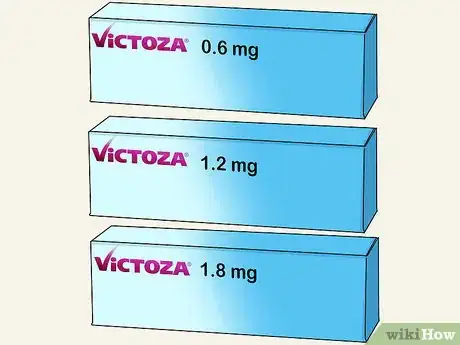
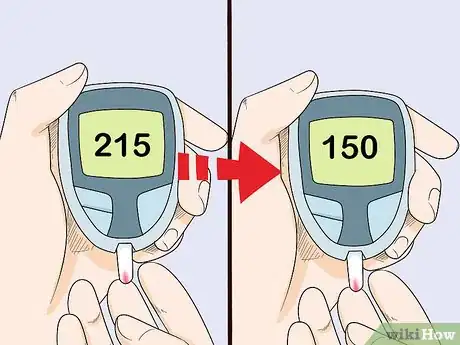
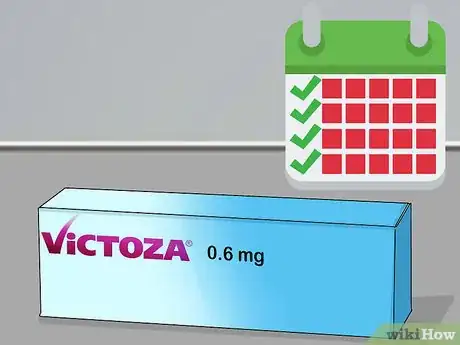
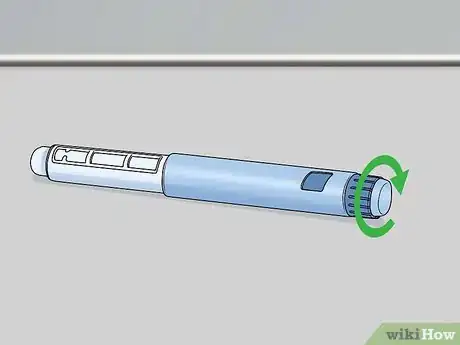

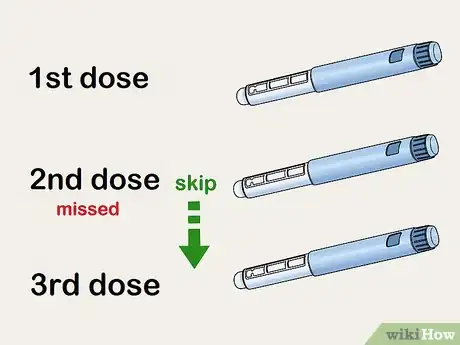



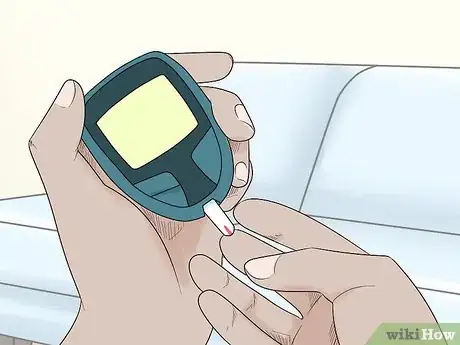
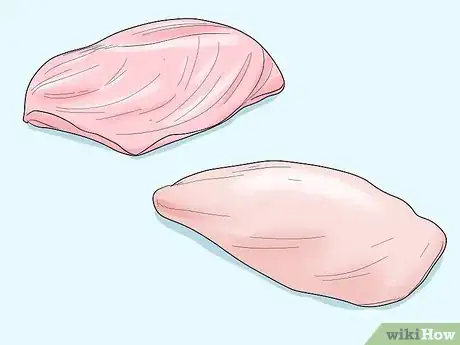


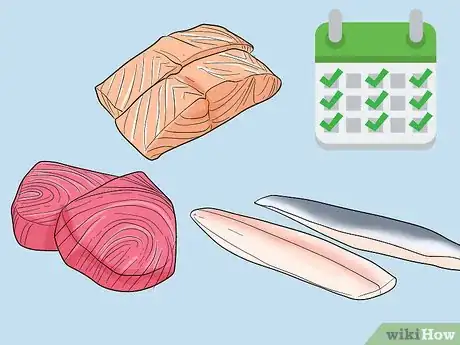
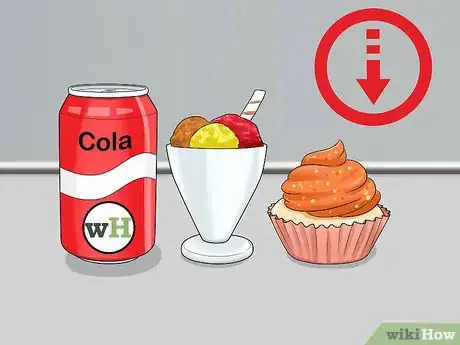





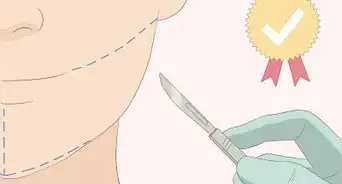






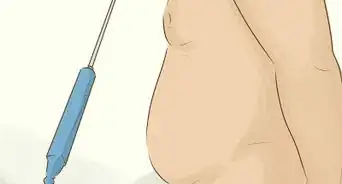

















































Medical Disclaimer
The content of this article is not intended to be a substitute for professional medical advice, examination, diagnosis, or treatment. You should always contact your doctor or other qualified healthcare professional before starting, changing, or stopping any kind of health treatment.
Read More...